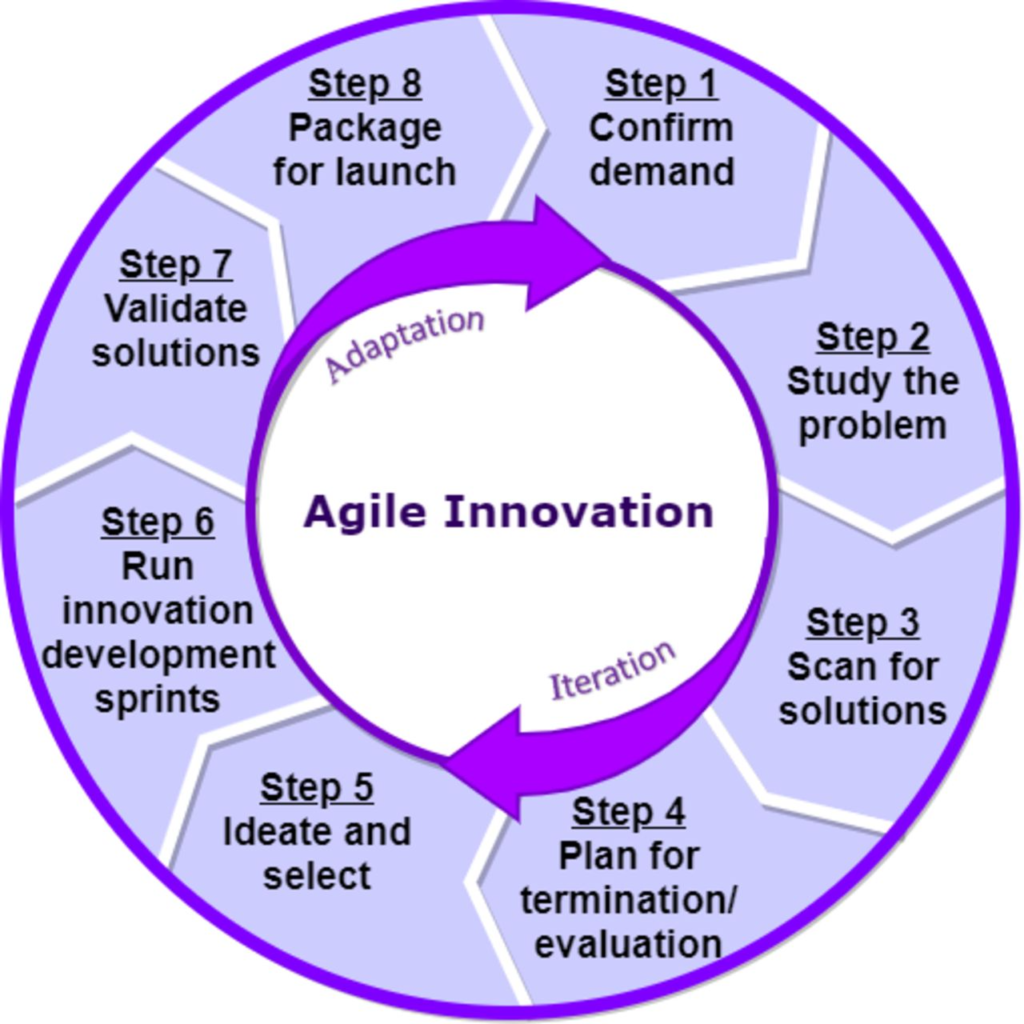In the fast-paced world of software development, companies strive to deliver high-quality products efficiently while fostering innovation. The Agile Software Development Cycle has emerged as a popular methodology that addresses these challenges. By breaking down the development process into iterative and incremental stages, Agile allows for flexibility, collaboration, and continuous improvement. This article explores the Agile Software Development Cycle, its benefits, and how it can enhance efficiency and drive innovation within software development teams.
Table of Contents
Understanding the Agile Software Development Cycle

The Agile Software Development Cycle encompasses a set of principles and practices that prioritize adaptability, collaboration, and frequent iterations. Unlike traditional waterfall models, which follow a linear sequence of development phases, Agile focuses on delivering value to customers quickly and continuously. The cycle typically consists of several stages: project initiation, requirements gathering, iterative development, testing, and deployment. These stages are repeated in short, time-boxed iterations, often referred to as sprints. Each sprint aims to deliver a functional increment of the software, incorporating feedback from stakeholders and end-users.
Benefits of Agile Software Development Cycle
The Agile Software Development Cycle offers numerous benefits for software development teams. Firstly, it promotes increased collaboration and communication among team members, as it emphasizes frequent interaction and feedback. This leads to a more transparent and efficient development process. Secondly, Agile allows for better risk management and adaptability. By breaking the project into smaller iterations, any issues or changes can be identified and addressed early on, reducing the overall project risk. Moreover, Agile enables quicker time-to-market, ensuring that valuable features are delivered in a timely manner, enhancing customer satisfaction and giving companies a competitive edge.
Key Components of the Agile Software Development Cycle

The Agile Software Development Cycle comprises several key components that contribute to its effectiveness. Firstly, user stories or product backlog items serve as the foundation for development. These are concise, customer-centric descriptions of desired functionality. They act as a guide throughout the project and enable the team to prioritize tasks effectively. Secondly, the concept of sprints allows for incremental development. Sprints are time-boxed periods, usually lasting one to four weeks, during which the team focuses on a specific set of features. This iterative approach enables continuous integration, testing, and feedback, fostering efficiency and reducing the risk of misalignment with customer expectations.
Agile Software Development Cycle vs. Traditional Waterfall Model
The Agile Software Development Cycle differs significantly from the traditional waterfall model. While the waterfall model follows a sequential, linear approach with little room for flexibility, Agile embraces change and encourages adaptability. Unlike the waterfall model, which requires all requirements to be defined upfront, Agile allows for evolving requirements through continuous collaboration with stakeholders. The waterfall model is often seen as rigid and slow to adapt, whereas Agile is dynamic and promotes a faster time-to-market. The Agile approach focuses on iterative development and encourages customer involvement throughout the process, leading to better alignment between the final product and customer expectations.
Enhancing Efficiency through Agile Software Development Cycle
The Agile Software Development Cycle can significantly enhance efficiency within software development teams. By breaking down the project into smaller iterations, it allows for faster feedback loops and early issue detection. This proactive approach reduces rework and helps the team identify and resolve potential bottlenecks promptly. Agile also promotes self-organizing teams that collaborate closely, share knowledge, and collectively make decisions, streamlining the development process. Additionally, the emphasis on continuous integration and testing ensures that any defects or issues are caught early, preventing their proliferation and minimizing the overall impact on the project timeline.
Driving Innovation with the Agile Software Development Cycle

Innovation is crucial for staying ahead in the competitive software development landscape. The Agile Software Development Cycle provides an environment conducive to innovation. By fostering frequent collaboration and feedback, Agile encourages creativity and idea-sharing within the development team. The iterative nature of Agile allows for the early identification of potential improvements or modifications, which can be quickly incorporated into subsequent sprints. Agile also promotes a customer-centric approach, enabling the team to adapt the product based on real-time feedback from end-users. This customer involvement and responsiveness contribute to innovation by ensuring that the final product meets the evolving needs and preferences of the target market.
Conclusion
The Agile Software Development Cycle is a powerful methodology that boosts efficiency and drives innovation in software development. By emphasizing collaboration, adaptability, and incremental delivery, Agile allows teams to quickly respond to changing requirements, reduce risk, and deliver high-quality products in a timely manner. Through its iterative nature, Agile enhances efficiency by promoting faster feedback loops, early issue detection, and proactive problem-solving. Furthermore, the Agile approach fosters innovation by encouraging creativity, idea-sharing, and customer involvement. By adopting the Agile Software-Development Cycle, companies can unlock the full potential of their development teams, streamline processes, and ultimately deliver software products that meet and exceed customer expectations.
Learn about: Revolutionize your online journey with Amazon Prime Shopping – Where convenience meets endless possibilities